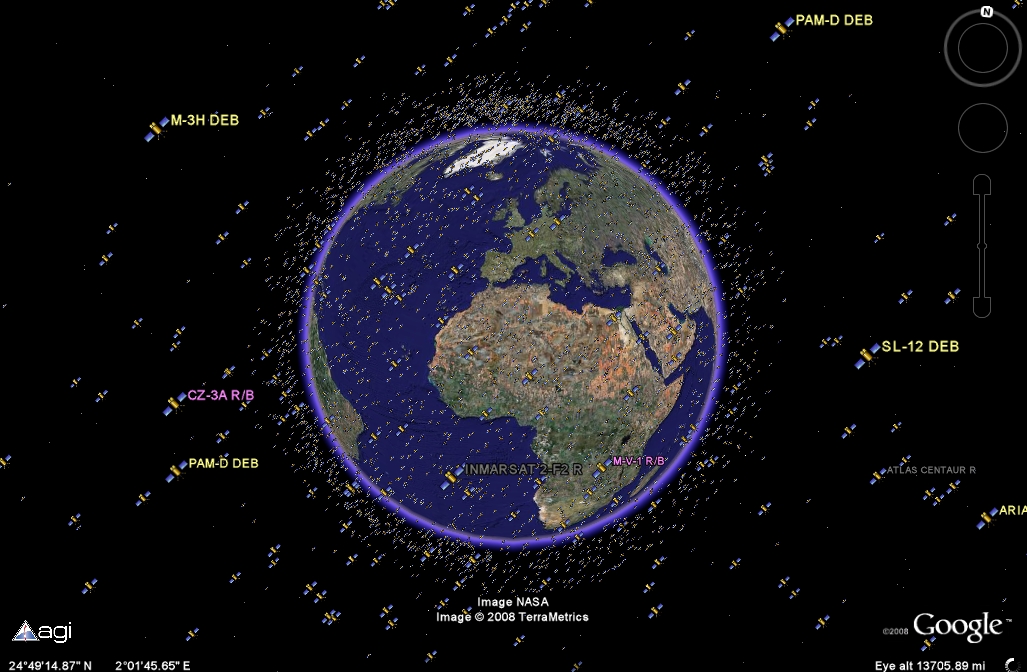[/caption]
Artificial satellites are human-built objects orbiting the Earth and other planets in the Solar System. This is different from the natural satellites, or moons, that orbit planets, dwarf planets and even asteroids. Artificial satellites are used to study the Earth, other planets, to help us communicate, and even to observe the distant Universe. Satellites can even have people in them, like the International Space Station and the Space Shuttle.
The first artificial satellite was the Soviet Sputnik 1 mission, launched in 1957. Since then, dozens of countries have launched satellites, with more than 3,000 currently operating spacecraft going around the Earth. There are estimated to be more than 8,000 pieces of space junk; dead satellites or pieces of debris going around the Earth as well.
Satellites are launched into different orbits depending on their mission. One of the most common ones is geosynchronous orbit. This is where a satellite takes 24 hours to orbit the Earth; the same amount of time it takes the Earth to rotate once on its axis. This keeps the satellite in the same spot over the Earth, allowing for communications and television broadcasts.
Another orbit is low-Earth orbit, where a satellite might only be a few hundred kilometers above the planet. This puts the satellite outside the Earth’s atmosphere, but still close enough that it can image the planet’s surface from space or facilitate communications. This is the altitude that the space shuttle flies at, as well as the Hubble Space Telescope.
Artificial satellites can have a range of missions, including scientific research, weather observation, military support, navigation, Earth imaging, and communications. Some satellites fulfill a single purpose, while others are designed to perform several functions at the same time. Equipment on a satellite is hardened to survive in the radiation and vacuum of space.
Satellites are built by various aerospace companies, like Boeing or Lockheed, and then delivered to a launch facility, such as Cape Canaveral. Launch facilities are located as close as possible to the Earth’s equator, to give an extra velocity kick into space. This allows rockets to use less fuel or launch heavier payloads.
The altitude of a satellite’s orbit defines how long it will stay in orbit. Low orbiting satellites are mostly above the Earth’s atmosphere, but they’re still buffeted by the atmosphere and their orbit eventually decays and they crash back into the atmosphere. Other satellites orbiting in high orbits will likely be there for millions of years.
We’ve written many articles about artificial satellites for Universe Today. Here’s an article about geosynchronous orbit, and here’s an article about orbital speed.
You can get more information about satellites from NASA. Here’s a cool realtime satellite tracking system, and here’s Hubblesite.
We’ve also recorded several episodes of Astronomy Cast about satellites. Here’s a good one, Episode 82: Space Junk.
Source: NASA

